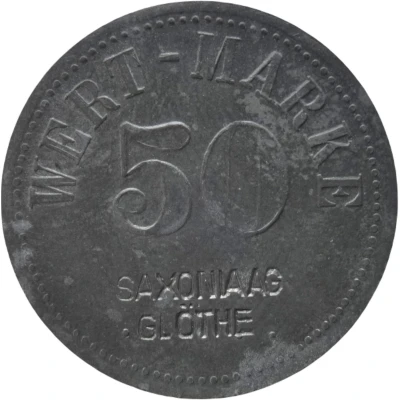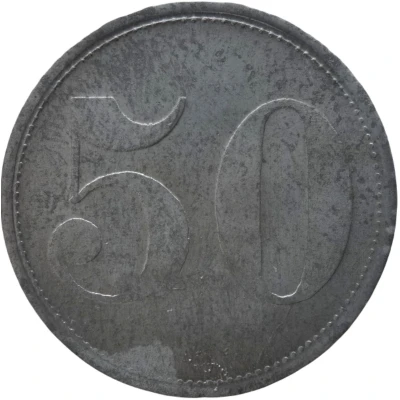


© Willem63 (CC BY-NC-SA)
50 Pfennigs - Glöthe (Saxonia AG) ND
| Zinc | 3.6 g | 25.1 mm |
| Issuer | Municipality of Glöthe (Prussian province of Saxony) |
|---|---|
| Type | Standard circulation coin |
| Value | 50 Pfennigs (50 Pfennige) (0.50) |
| Currency | Mark (1914-1924) |
| Composition | Zinc |
| Weight | 3.6 g |
| Diameter | 25.1 mm |
| Thickness | 1.2 mm |
| Shape | Round |
| Technique | Milled, Countermarked |
| Orientation | Medal alignment ↑↑ |
| Demonetized | Yes |
| Updated | 2024-10-04 |
| Numista | N#319947 |
|---|---|
| Rarity index | 97% |
Reverse
Pearl rim, with denomination centered
Script: Latin
Lettering: 50
Edge
Plain
Comment
Menzel: BBBFa: Zementfabrik
Interesting fact
One interesting fact about this coin is that it was minted during a time of economic turmoil in Germany. The 50 Pfennigs coin was introduced in 1923, during the hyperinflation period that followed World War I. At that time, the value of the German mark had dropped significantly, and the government was forced to introduce new coins with lower denominations to keep up with the rapidly increasing prices. The 50 Pfennigs coin was one of these new coins, and it was made of zinc, a relatively inexpensive metal, to keep production costs down. Despite its low value, the coin was an important part of everyday life in Germany during that time, and it remains a interesting piece of history for collectors today.